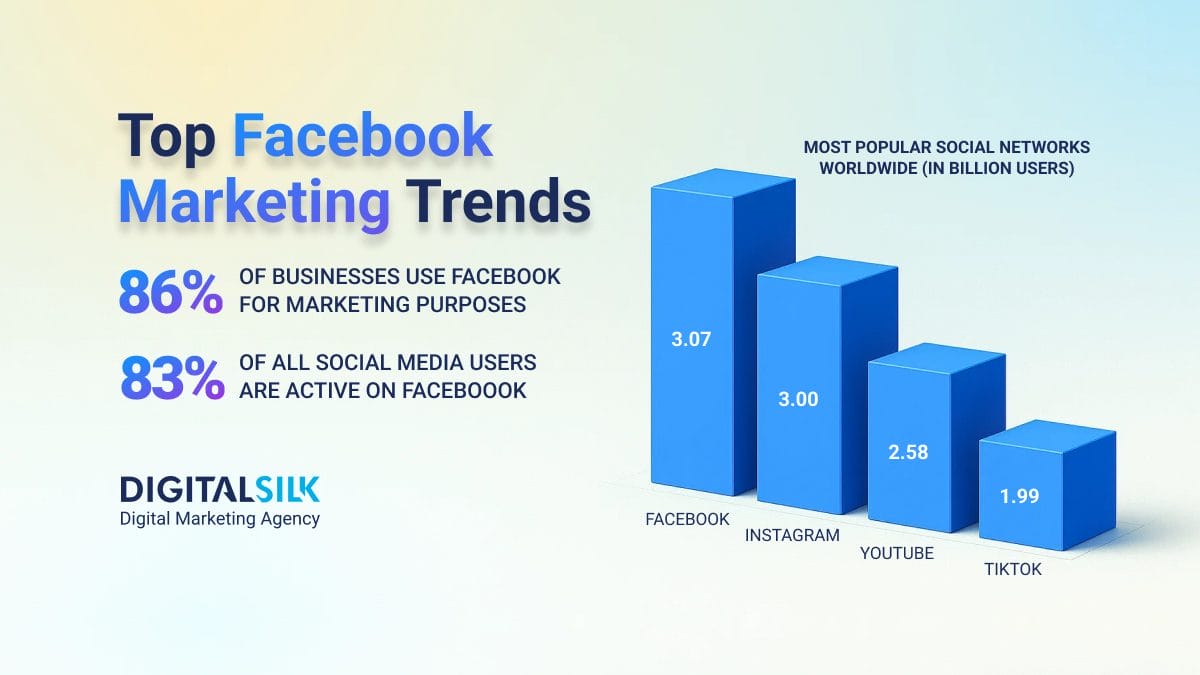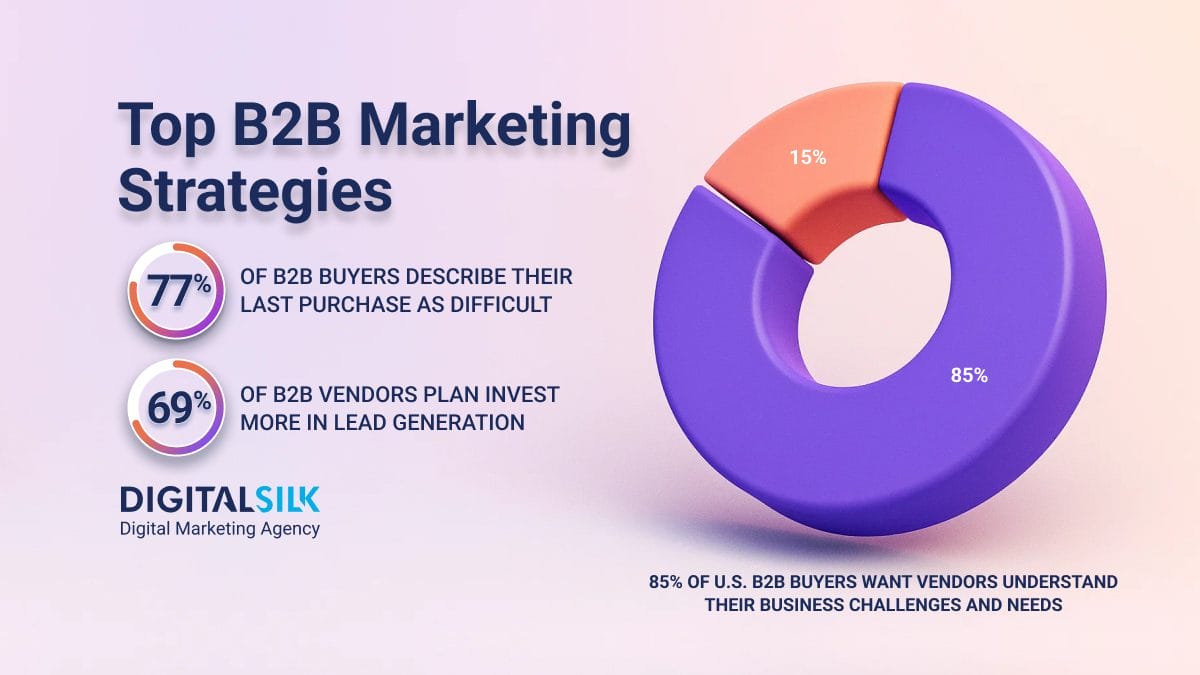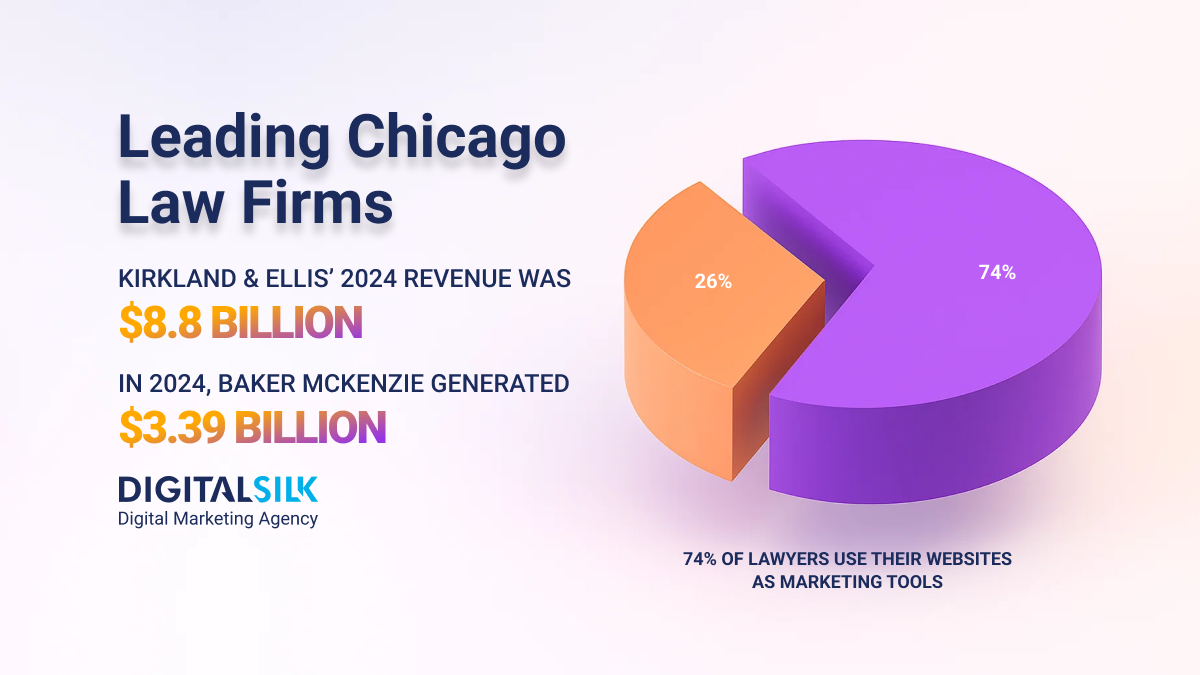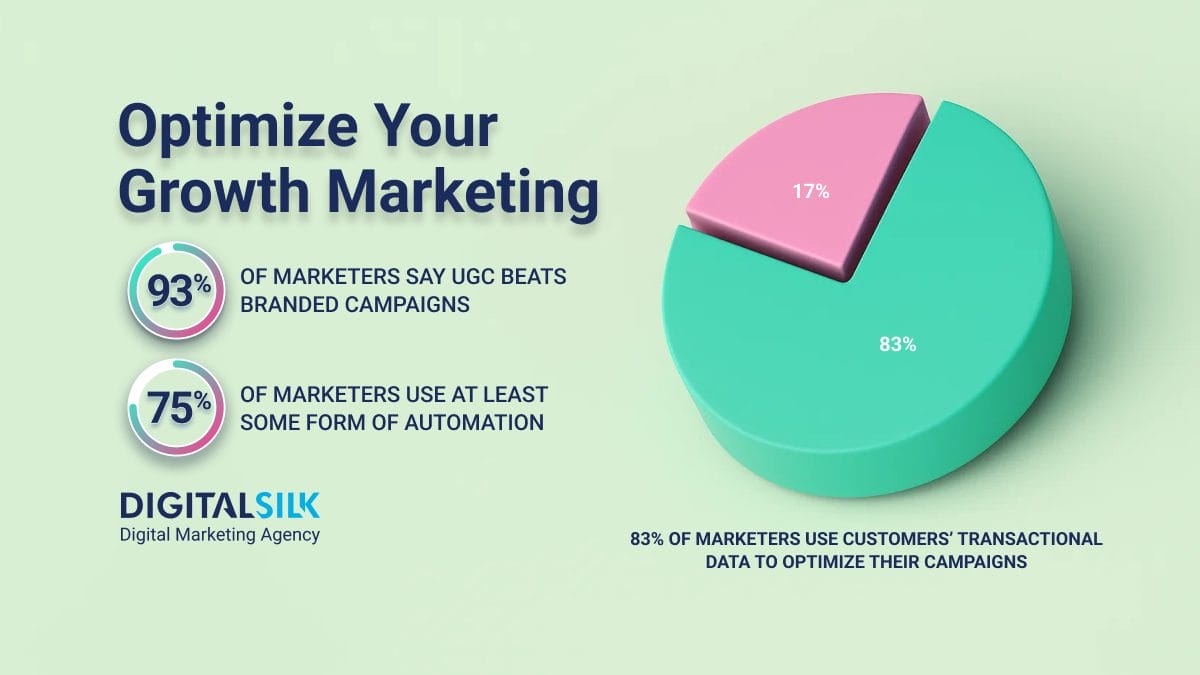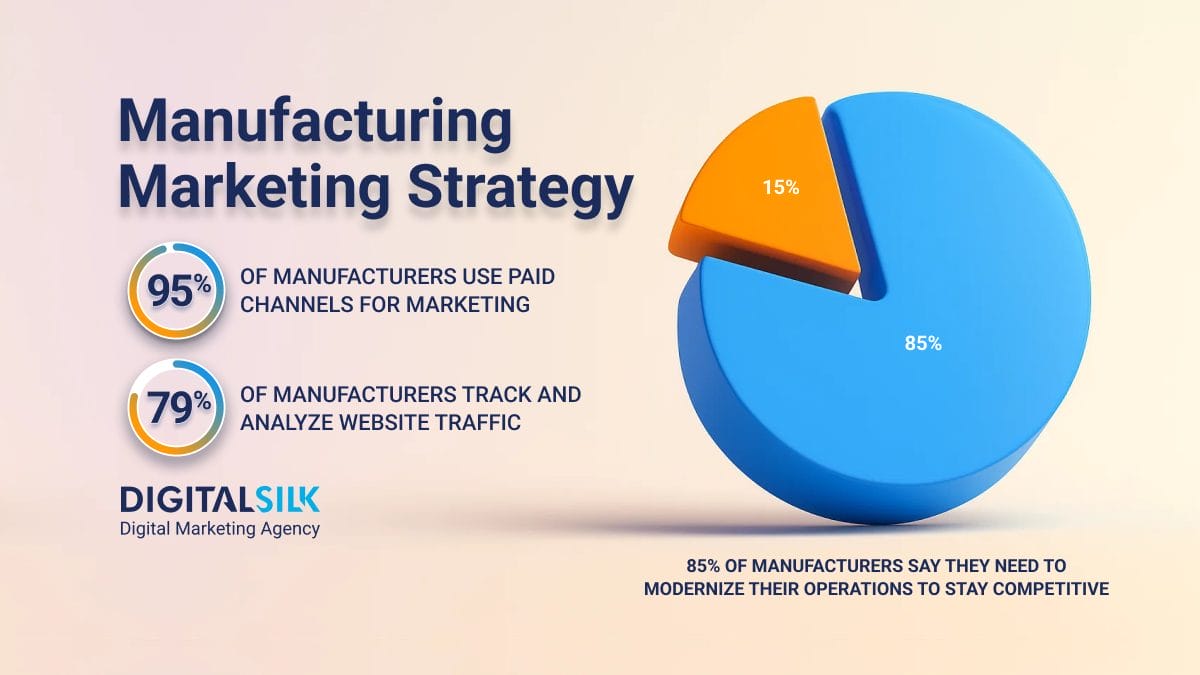Global digital marketing spending will reach $740.3 billion in 2024, with 70% of total ad spending generated through mobile in 2028.
Businesses are increasing their investment in digital marketing because it works.
But, not always.
Many of these businesses keep making the same digital marketing mistakes that affect their traffic and lead generation conversion rates and ROI.
This article will:
- List some of the most common digital marketing mistakes to avoid and which businesses everywhere make
- Provide actionable and useful tips on how to avoid making these mistakes
- Suggest the digital marketing strategies to prioritize according to their results
Work with our digital marketing experts. Request a quote
10 Most Common Digital Marketing Mistakes To Avoid & How To Fix Them
In this section, we look at the most common digital marketing mistakes, segmenting them into two categories:
- Strategy-related
- Approach to content creation
Each section will offer actionable tips on remedying the issues to optimize your efforts and return on investment.
Top Marketing Strategy Mistakes + Solutions
Here is the list of the top 10 marketing mistakes to avoid and pro tips on how to deal with them.
1. Doing Anything Without Clearly Defined Audiences
90% of companies using personas have been able to create a clearer understanding of their buyers.
Some business leaders, particularly first-time entrepreneurs and small business owners believe that casting their net wide is a way of expanding the market and reaching more customers.
The reality is that only a few very specific groups will bring in most of a business’ revenue, and “casting their net wide” means neglecting these in favor of fickle possibilities.
What’s more, this approach inhibits them from developing a deep understanding of their actual prospects’ interests, pain points, and behavior patterns.
Knowing your customer is the foundation of every solid digital marketing strategy, so define your market and get to know the people you are selling to.
The best way to do so is to create buyer personas for the two or three types of customers you identify.
These will shape your strategies and reveal the channels to invest in for maximum return.
To define your ideal customer:
- Define buyer personas: Segment your market into a couple of distinctive ‘customer types’. Define them demographically, identify their pain points, their expectations, and their possible objections to your offering.
- Hire experts for market research: Work with experts to develop a better understanding of your market and its changing habits and expectations.
- Talk to your prospects: Engage with them on social media through comments conversations, surveys, polls forums and elsewhere. Communicate with them directly and learn about your audience right from the source.
2. Not Addressing Your Audience & Their Pain Points Directly
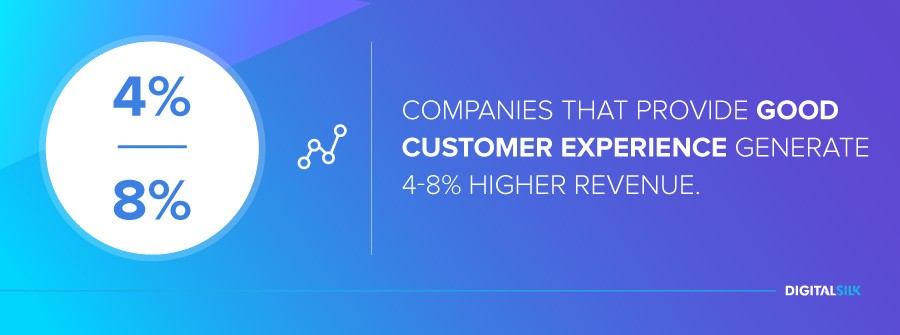
Companies that take extra care of customer experience drive revenue 4-8% higher than those that do not.
Your audience is primarily interested in solving their problems and pain points – not in your products.
Instead of focusing on your product’s features, talk to your prospects and customers about how it can make their lives better.
Describe how it can transform your buyer in a way they hope for and move them from the issue-ridden “before” state to the improved “after” state.
Think hard about the offer you’re making and the desired “after” state. Articulate the journey from “before” to “after”. The success of your digital marketing depends on the clarity of your offer’s desired outcome.
You can gain insight into your audience’s pain points by:
- Analyzing their current situation through customer interviews, customer support cases and surveys.
- Directly communicating with stakeholders, sales, and support teams that are familiar with customers’ requests.
- Looking for third-party industry research on the shared pain points and taking note of the key findings to decide on your approach
3. Superficial Approach To SEO
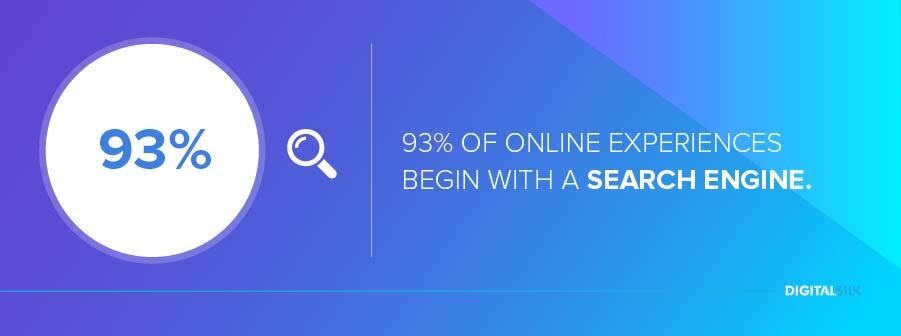
93% of online experiences begin with a search engine.
With over two billion blog posts alone popping up on the Internet every day, optimizing your content for search engines is the only way to gain visibility and attract organic traffic.
Search engine optimization is a fast-changing game and you need to keep on your toes at all times to make sure you follow the latest set of rules.
However, there are time-tested SEO techniques that will always help your content appear in search results and rank better.
The elements you must include in your SEO strategy are:
- The right keywords: As previously pointed out, this applies to the keywords you wish to rank for, but also the keywords that your target audience is using to find what they need. Focus on those that have a search volume and for which you have realistic chances of ranking.
- Quality content: Google and other search engines favor high-quality, relevant, long-form content that is well-researched. Add multimedia and visually rich elements such as videos to improve users’ dwell time and engagement.
- Mobile-friendliness: Mobile has taken over the majority of internet traffic from desktop and whether your website is optimized for mobile is a strong SEO signal.
- Backlinks: Getting backlinks from authority domains and influencers in your field ranks you higher and appoints you as one of the authorities.
- Image name optimization: Focus on the details such as neatly naming your image files, preferably to contain one of your keywords, as well as defining the alt tags.
- URLs: Use short and clear URLs that contain a primary keyword and describe the topic of the page are a great SEO signal.
Pro tip: To stay on top of such a fast-evolving field as SEO, subscribe to updates by SEO authorities that are at the forefront of these developments and learn from them. Alternatively, employ the services of a professional agency whose job is to follow and apply SEO knowledge and trends.
Let’s talk! Set Up A Consultation
3. Neglecting The Keyword Research

67% of all clicks go to the first five organic results.
The core of your SEO strategy – keywords are the “portal” to your business.
87% of your customers begin their product searches online, meaning that when the need for your solution arises, they turn to search engines first.
Neglecting keyword optimization means missing out on the opportunity to meet your customers organically in search when their purchase intent is high.
The benefits of getting your keywords right are:
- Increase in organic traffic
- Increase in the number of qualified leads
- Insight into audience preferences and pain points
The best tips that will help you with your keyword research are:
- Find out what keywords you already rank for
- Look at what your competition is doing
- Use Google’s search suggestions as a tool for research
- Put yourself in the position of your customers
And, ask yourself these questions to determine the best keywords to target:
- Are my existing keywords targeting what users are searching for?
- Will people who get to my site find the answers they were looking for?
- Will these people help me reach my conversion goals? I.e. are my chosen keywords targeting the right audience?
Put yourself in the position of your target audience and think about what they would search on the web and how this relates to your business.
Pro tip: Make the keyword research tools a part of your regular digital marketing efforts. For a more basic strategy, use free tools such as UberSuggest. If you are developing a more robust SEO strategy, tools such as SEMRush and Ahrefs will give you the insights, analytics and competitor insights that you need.
4. Campaigning & Investing Without A Strategy
Around 40% of marketers have a content marketing strategy.
Lack of structure and vision is one of the digital marketing mistakes many, if not most, young and small businesses commit.
As a result, their efforts are incoherent, difficult to manage, measure and scale.
Your competitors might also be stuck in this maze which leaves more room for your business to take the lead.
To get started with developing your digital marketing strategy:
- Define your audience(s), i.e. buyer personas
- Set SMART goals
- Define the tools, channels and tactics to achieve them
- Keep track of your progress and fine-tune your strategy based on results
It’s important to establish objectives, but it’s equally as important to map out the steps you will take to reach them.
Once you define and test your strategy, you will have data and deeper insights into the areas that are performing and those that need further improvement.
5. Spending Recklessly On Paid Ads
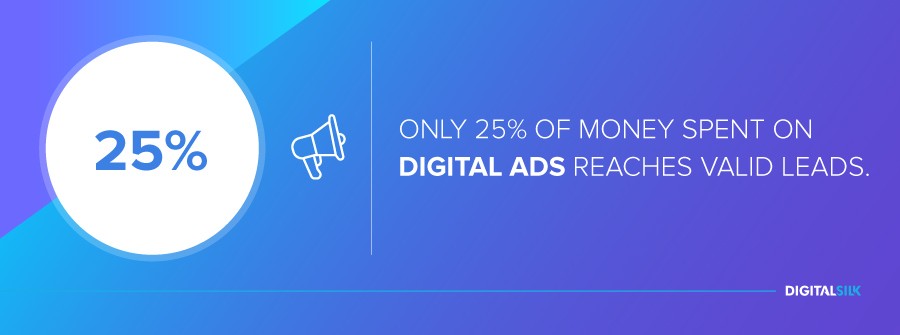
Only close to 25% of money spent on digital ads reaches the right people.
PPC marketing on platforms such as Facebook and Google Ad Words can be extremely rewarding in terms of growing reach, traffic and conversions.
However, it can be extremely costly if executed without a solid strategy.
Before deciding to go down the Facebook and Google Ads route, make sure to:
- Research your target audience and segment it into several sub-groups, all of which can contain different age groups, locations, levels of education, interest and even income levels.
- Run A/B testing and try out several ad campaigns with different ad formats and different audience segments to see which one provides the best results. Don’t spend too much of your budget on them – just enough to get credible results to draw conclusions and base future campaigns on.
- Define your paid ads budget and be ready to adjust the price per click of each ad on the go, as you monitor their performance and decide on the next steps while ad campaigns still run.
Pro tip: Save paid advertising for later. Spend time testing other strategies first and getting to know your customers so that you can define your target audiences, refine your targeting and increase ad ROI.
6. Expecting Results Overnight
Business leaders often get demotivated if they don’t see the immediate results of their digital marketing efforts.
But these campaigns and tactics need time to succeed.
Facebook ad campaigns need approximately a week to show conclusive stats that point to their success rate.
The outcome of new SEO practices usually shows after two months or more.
The immediate accessibility and fast development of the online world make decision-makers wrongly assume that digital marketing is a magical shortcut to their goals.
However, digital marketing targets people.
It takes time to reach them and to make them notice you, to win their attention, to engage them and to convert them. Even when they notice you, it may take a lot of exposure before they decide to engage with you.
The only thing that may guarantee results in digital marketing is consistency and constantly trying out different ways and methods.
7. Posting On Social Media Without A Plan
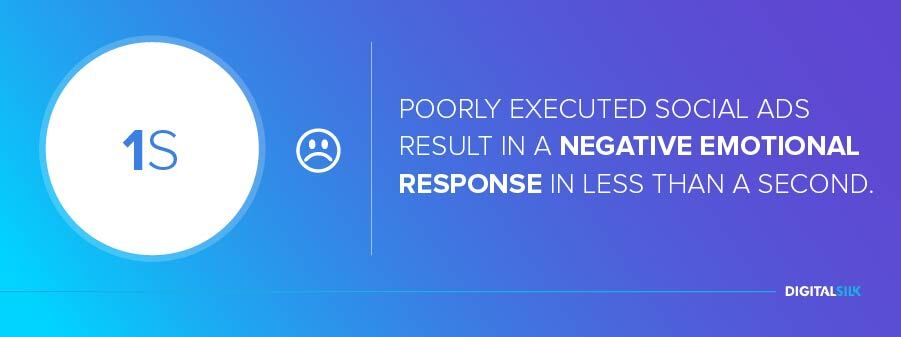
Poorly executed social ads result in a negative emotional response in less than a second.
Whether it is organic activity or ads, a surprising number of businesses use social media aimlessly.
These channels hold great opportunities to engage with your customers directly, expand your reach and build relationships.
Consistency and good timing are the two important factors for the social media posting strategy.
Research suggests that posting at certain times of day boosts post’s reach and drives engagement rates – and that this differs across different platforms.
Here is some advice on properly using social media to grow your business:
Identify your goals on social media: Implementing SMART goal-setting strategy on social media is advisable. It stands for:
- Specific
- Measurable
- Attainable
- Relevant
- Timely
Find the appropriate platforms: Not all social media platforms have the exact same audience. Users on Facebook differ from those on business-oriented LinkedIn and more lifestyle-oriented Instagram. Think in these terms:
- Ask yourself which audience would respond better to your product or service. LinkedIn is great for marketing to other companies, Instagram for reaching young people and Facebook for selling directly to consumers.
- Study your competitors, which channels they use, who are their followers, what content they share.
Appoint a social media accounts manager: Social media managers can provide:
- Strategic thinking: Understanding how to come up with and present social media posts and how to engage with followers.
- Organizational skills: A step-by-step strategy that follows the specific schedule for posting.
- Branding expertise: Understanding your company’s brand and providing the professional voice for it.
Write, curate, listen and be consistent: Posts that educate, inspire and entertain should be your priority.
Team up with influencers: Through networking with influential people on social media you can gain further credibility, because 50% of buyers look for influencer reviews before buying a product.
Work on growing followers: Your business should work on organically boosting the number of followers on all social media channels that are relevant for the product or service.
Engage with them: Responding to people’s comments, communicating with them directly, conducting live video streams is a kind of personalization people expect on social media today. When you engage with your audience, you develop brand personality and credibility and foster trust between your business and followers.
Speak with our experts. Schedule A Consultation
Content-Related Digital Marketing Mistakes + Solutions
For the next three points, we focus on the most common content marketing mistakes
It includes underused strategies and producing content for the content’s sake as well.
8. Not Using Social Proof Including Case Studies & Success Stories

60% of B2B buyers search for peer reviews and testimonials.
Case studies are vastly underused in B2B content marketing despite their effectiveness.
In fact, 44% of tech marketers say that case studies are the most effective content marketing tactic for lead generation.
Case studies are also quite powerful in influencing your leads’ purchasing decisions. They help your prospects visualize the benefits of your offering and give them confidence in your ability to drive results.
So, case studies are great at:
- Boosting organic traffic
- Increasing brand credibility
- Converting leads
Best of all, they are quite simple to write and they usually follow an established template.
A typical case study contains:
- An introduction
- Background of the creation of a case study
- Presentation of findings
- A conclusion with data and references
9. Blogging To Follow Trends, Not To Provide Value
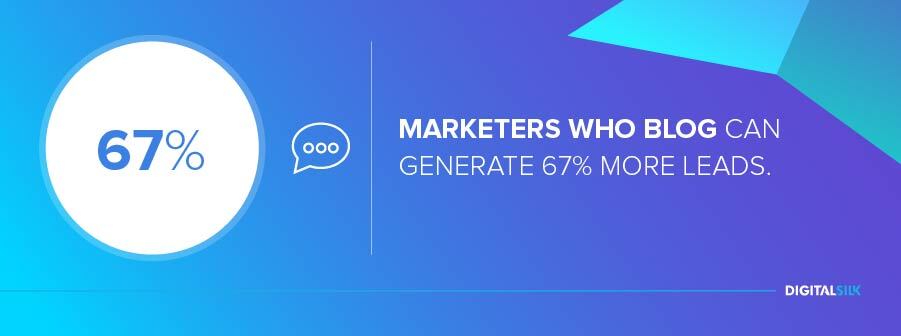
Marketers who blog can generate 67% more leads.
Marketers who prioritize blogging efforts are 13x more likely to see positive ROI.
The operative word here being: prioritize.
Those who blog just because blogs are said to provide X, Y and Z benefits run the risk of damaging their credibility and reputation due to poor-quality content.
Those who blog strategically, focusing on providing real value to their customers:
- Increase visibility in search and grow organic traffic.
- Get 97% more indexed links.
- Build a relationship of trust with prospects and existing customers.
To reap these benefits, make sure you are creating and publishing high-quality, well-researched, in-depth content that is relevant to your audience.
10. Overproducing Content & Not Focusing On Quality
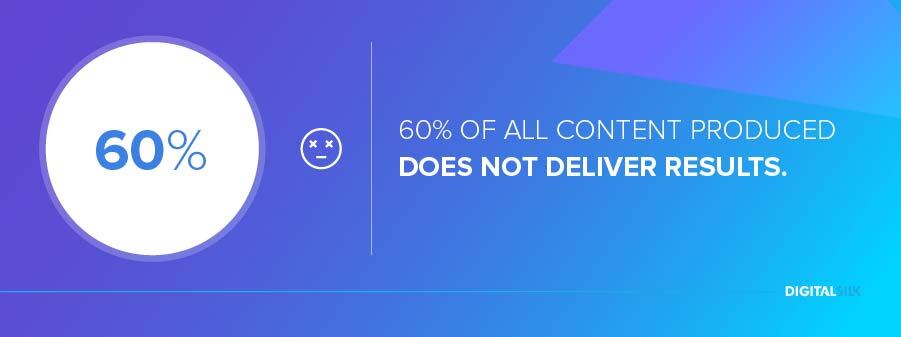
60% of all content produced by brands is deemed poor, irrelevant and not delivering results.
It’s very easy to fall into the trap of thinking that the more content you produce, the more ads you publish, and the more of everything you do – is for the best.
In reality, this a costly digital marketing mistake. There is already so much content out there and so many ads competing against each other.
What you need to better position yourself in this ocean of competitive content – is to make sure your content is amazing!
Instead of making five blog posts per week, make one spectacular article, packed with case studies, data, visuals and other extras that raise its value and make people want to share it.
Here are some useful tips for creating content that will shift your focus from overproduction to quality work:
- Monitor social media and Google: Pick up on industry topics and news that are trending. Use Google search results, search suggestions and “People Also Ask” as indicators of topics that are hot with your audience.
- Use the Skyscraper technique: Locate a piece of content that is relevant for you and your audience and which is performing great. Make your own version of that – but make it even better, bigger, bolder, richer! That’s the gist of skyscraping.
- Remain specific to your niche: Don’t go overboard trying to be an encyclopedia of everything. Stick to what you do and what you’re great at and be very detailed about your topic.
- Define the purpose of everything you make: Create a Contact page that is about people finding you quickly and easily, an About Us page that sums up what makes you different in your industry and so on.
- Use facts: Do your research and show credible numbers, backed by legitimate sources. This establishes you as a trustworthy authority.
Pro tip: Search engines also perpetuate the “quality before quantity” mantra. Google’s officials have hinted at more sophisticated algorithms that will rank content according to its value, usability and quality.
Bonus Tip: How To Minimize Online Marketing Strategy Mistakes By Prioritizing Digital Marketing Efforts
Analyze your existing lead generation strategies, marketing tactics and customer base:
- Think about your successful, closed business deals. Where did they come from? What brought you the clients you have now?
- Think about the biggest sources of your leads, as well as those you haven’t tapped.
- Track the revenue for every current client you have. Document this to have a clear overview of where to invest your time and money.
Once you define the above, focus on the top few sources of customers, leads and revenue.
Establish a digital marketing strategy that has historically had the highest ROI and find out what made that ROI happen. Then, apply more of that exact strategy.
Which Digital Marketing Strategies Are Getting The Best Results?
Several studies have provided insight into which digital marketing tactics have the best ROI.
You can also explore our case studies and see which strategies led to the increased digital performance.
On average, the top five digital marketing channels according to their effectiveness are:
- Email marketing
- Social media marketing
- SEO
- Content marketing
- Social PPC
Digital Marketing Mistakes Key Takeaways
Before applying any of these fixes to the mistakes you may be making in digital marketing, put your efforts to the test.
Define what needs to be modified, what results are you achieving and which digital marketing channel you need the most.
Have you ever made some of these common digital marketing mistakes yourself?
DigitalSilk can help you avoid them and maximize your digital marketing results.
"*" indicates required fields




